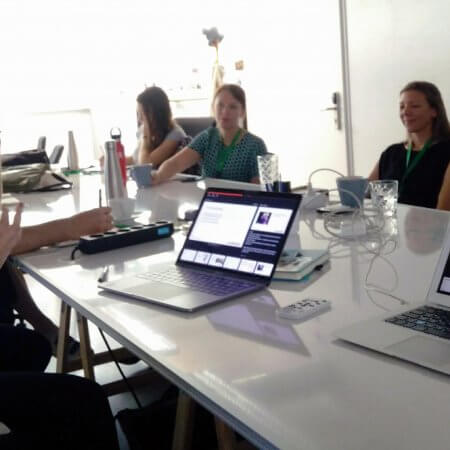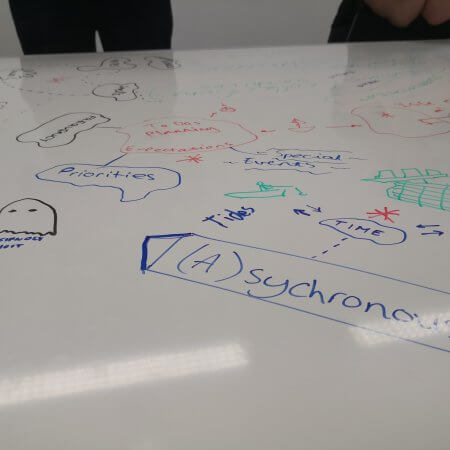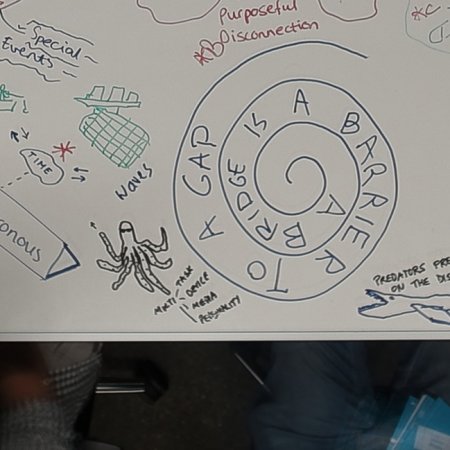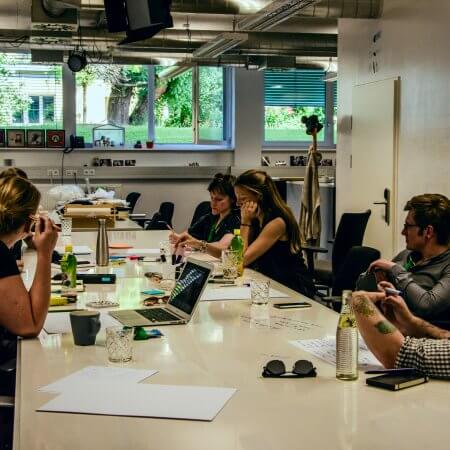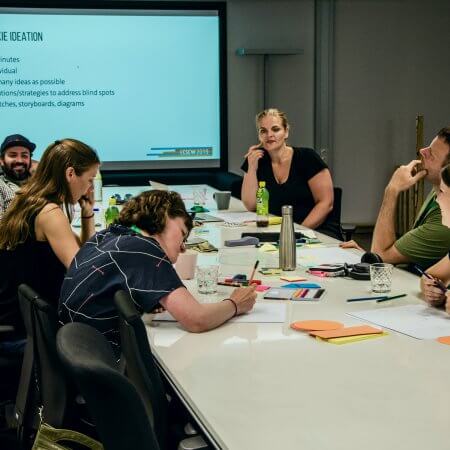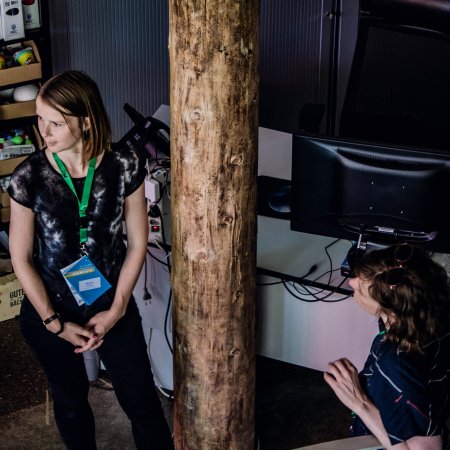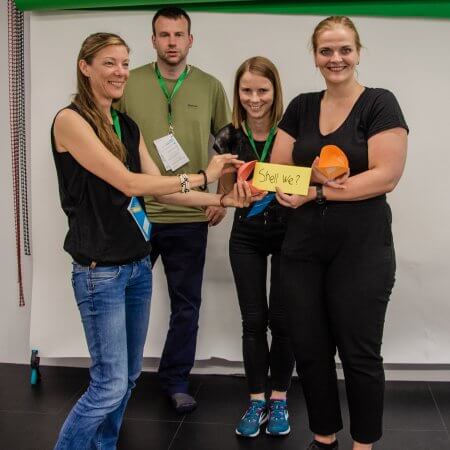This workshop focused on the material qualities of dislocation. The process of humans becoming separated from each other is likely to have diverse consequences; from shifting frequency, modes, or routines of communication and collaboration, to completely alternate means of connection. In this workshop, we discussed a broad range of material manifestations and implications of (researching and designing for) dislocation and /re)connection. We reflected on the state of the art and anecdotal experiences, discussed research gaps and potentials, and explored hands-on how design can create opportunities for (re)connection in response to dislocation.
See the full workshop proposal here.
Key questions guiding the workshop:
- Which physical / socio-cultural / material practices exist, whether technologically mediated or not, to reconnect in case of dislocation?
- Which materials or which interactive qualities are promising to be used for reconnecting?
- How can material qualities account for the (often invisible) networked digital apparatus surrounding dislocated interactions?
- How can we study the way material qualities in dislocation are actively adopted in everyday practices and how people give meaning to them?
Workshop Participants
- Robb Mitchell, Southern Denmark University
- Konstantin Aal, University of Siegen
- Marije Nouwen, Mintlab, KU Leuven
- Susanna Vogel, Center for Human-Computer Interaction, University of Salzburg
- Eléni Economidou, Center for Human-Computer Interaction, University of Salzburg
- Jakub Sypniewski, Center for Human-Computer Interaction, University of Salzburg
Procedure
The workshop started with a presentation by the organisers on the definitions of dislocation and connection, as well as the definition of play that would be used during the workshop:
“Play isn’t doing what we want, but doing what we can with the materials we find along the way. And fun isn’t the experience of pleasure, but the outcome of tinkering with a small part of the world in a surprising way.”
Ian Bogost. 2016. Play Anything: The Pleasure of Limits, the Uses of Boredom, and the Secret of Games. [p3f]
State-of-the-art technological solutions were also shown and discussed with the participants, such as the Internet of Toys by Mariën; and the CuteCircuit Hug Shirt. We then introduced three materials (though not necessarily physical materials) to guide our discussions. Those materials were time, space, and the body.
Time
- How can a tangible artifact facilitate different notions of time in dislocation?
- How do we interact with time and through time over distance?
- What design qualities emerge?
- time as material
- time as context
- time as content
- time as limitation
- time as presence
Space
- How can we use shared virtual spaces for reconnection?
- The problem with 2D technologies
- The problem with 3D spaces
Body
- How can we view clothes as design material for resembling physical presence?
- What are qualities of worn artefacts?
- What roles do memories and connotations play?
Introductions & Anecdotes
Following the organisers’ introduction of the workshop themes, it was up to the participants to introduce themselves. Before the workshop, the participants were asked to think about (digital or analog) artefacts, materials or tools that they used to (re)connect, and to bring them to the workshop. The things brought to the workshop ranged from postcards from grandma, a pet monitoring video app used to check on the cat, shells brought from the sea side, a book sent back and forth between friends, and many more. The often quite personal anecdotes from participants sparked a great deal of discussion about shared experiences and different approaches for (re)-connection.
Islandscape
We moved from a round table discussion towards a constructive mapping session, in which we sketched the landscape of dislocation, focussing on challenges, blindspots and opportunities. Because of the nature of the question, the landscape immediately turned into a a sea full of islands, with connecting bridges, boats and ships, and sea-creatures that may support or disrupt (re)connection.
Material Explorations
Based on the sketched landscape, the participants spent a quick 15 minutes individually brainstorming ideas to reconnect dislocated family members. The ideas that the participants came up with were shared among the group, and overlap and shared interests were discovered. The ideas were also matched to the themes of space, time and body. In the last 90 minutes of the workshop, the participants split up into two groups and quickly created prototypes of the proposed solutions, using basic materials, such as paper, beads, wooden pieces, etc.
Future Steps
- Digitize/Materialize Islandscape of Dislocation and Reconnection
- Distill design sensitivities
- Use new Islandscape for next workshop
